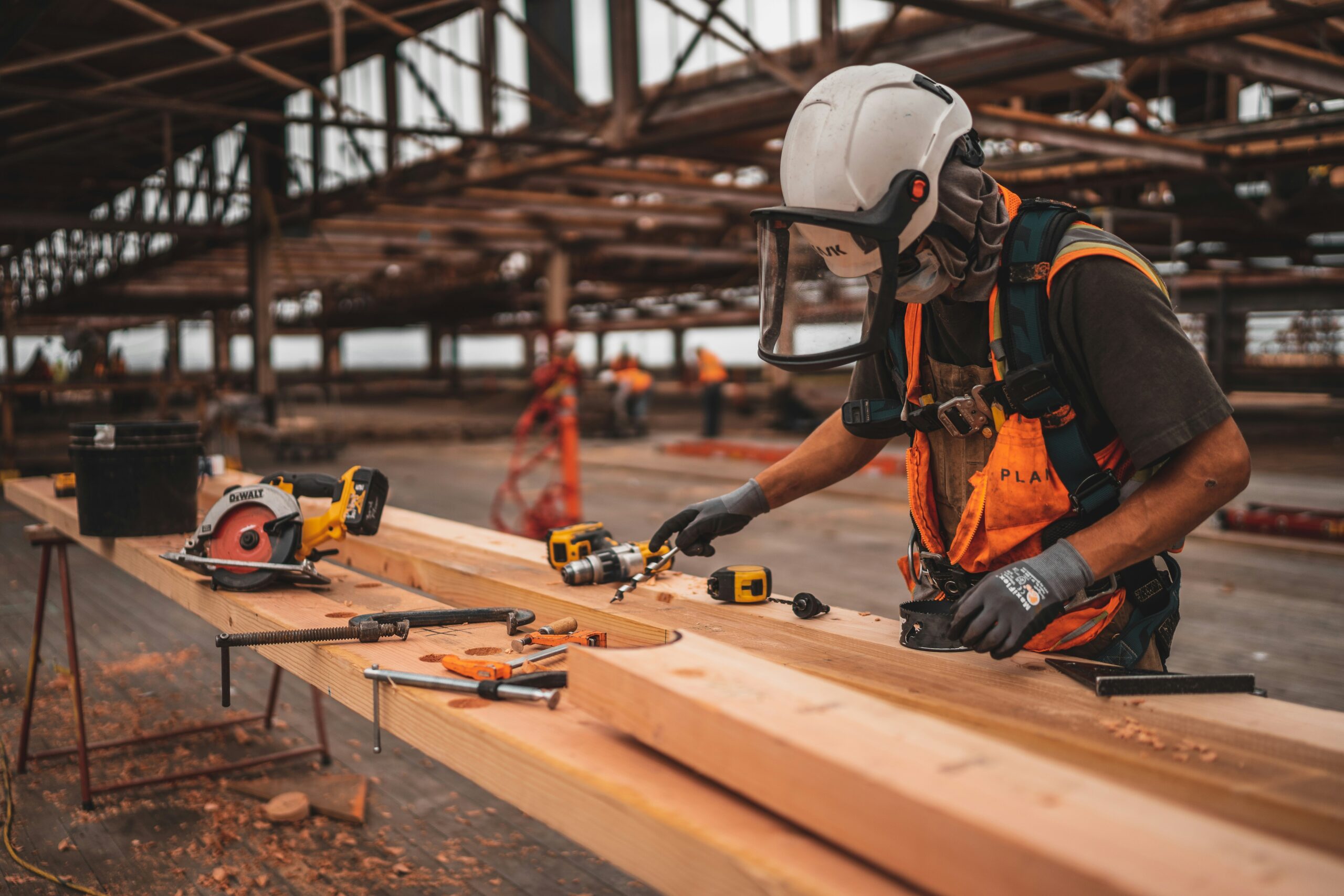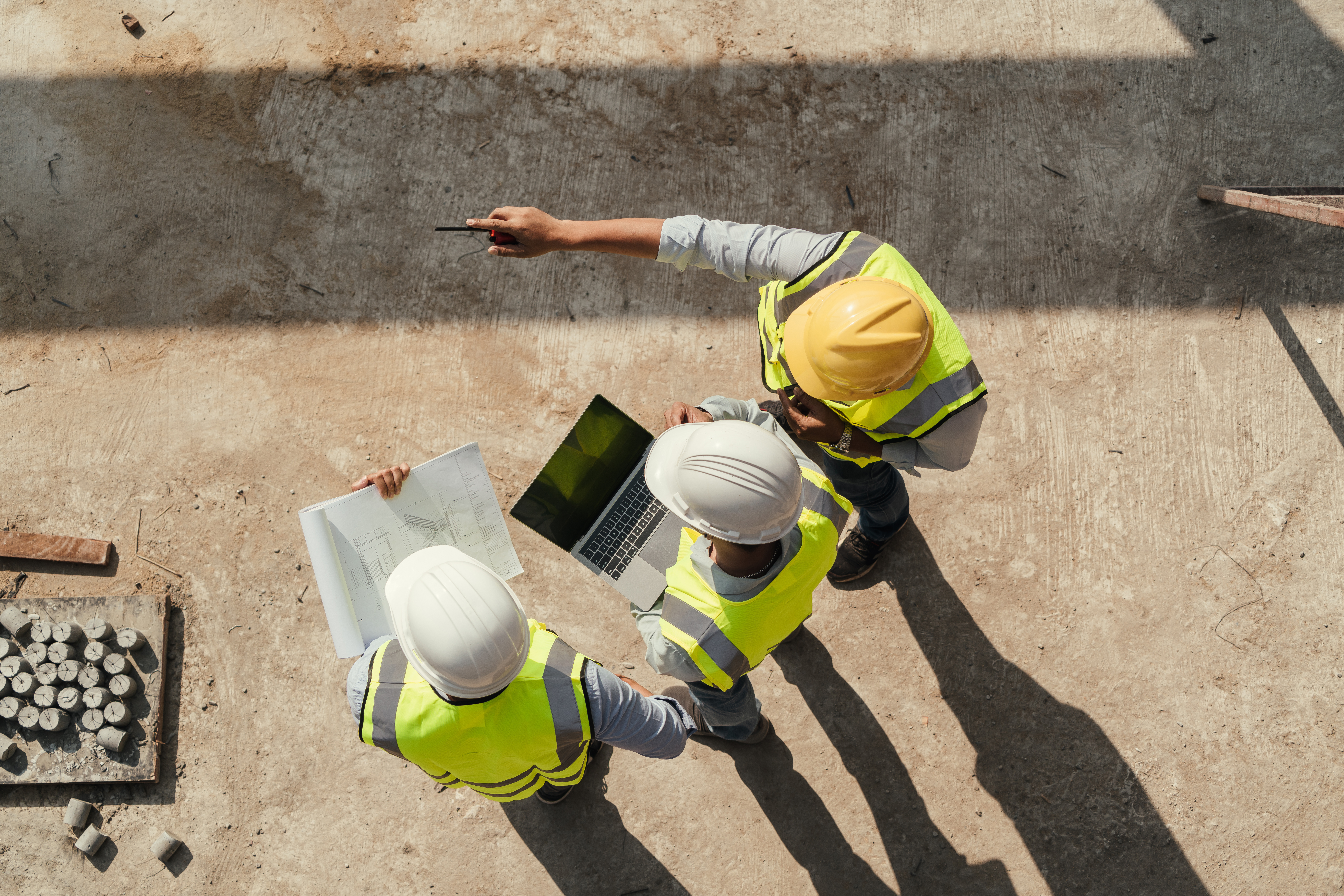By David Bowcott
In today’s fast-paced, technologically driven world, the construction industry is undergoing a transformative shift. Historically characterized by manual processes and siloed operations, the industry is now embracing digital technologies and artificial intelligence (AI) to solve age-old problems and discover new opportunities. At the heart of this revolution lies the ability to decipher patterns—within data, operations, and industries—and harness them to drive better decisions, innovation and efficiency. As AI becomes more integrated into the construction sector, it promises not only to streamline processes but also to revolutionize the way leaders approach challenges and opportunities.
A Digital Era for Construction
The construction industry has become increasingly digital. A substantial amount of all information related to construction projects is now stored, communicated, and analyzed in digital formats. This includes everything from project designs and cost estimates to safety protocols and quality control measures. Two primary sources of this digital information, or data, come from digital twin components and digital correspondence. The project digital twin is made up of data from the various component parts of the project’s technology stack. This includes data from pre-construction tools (like BIM), scheduling solutions, project management technologies, IoT backbones, reality capture solutions, counter-party risk assessment technologies, just to name a few of the key DT categories. These component parts spin off massive amounts of data that, once aggregated, allow teams to monitor project productivity and risk in real time. Meanwhile, digital correspondence—emails, correspondence within the project management platform, and document sharing systems—tracks the day-to-day communications and decisions that drive projects forward. Together, these tools create a treasure trove of data that, if properly harnessed, can unlock insights, drive efficiency and reduce risk.
The Role of Leaders in Deciphering Patterns
The construction industry’s greatest leaders have historically excelled at deciphering patterns within their organizations and the construction industry at large. Whether it’s identifying inefficiencies in project timelines or recognizing gaps in safety protocols, these leaders rely on their breadth of knowledge to connect the dots across various silos. A successful construction leader understands not only their core area of expertise but also how other functions—finance, legal, design/engineering, estimating, project management, procurement/supply chain, quality control, and safety—intersect and impact outcomes. This holistic understanding enables them to make informed decisions that consider the ripple effects across the organization. However, even the most experienced leaders face limitations. Human cognitive capacity can only process so much information, and the growing complexity of construction projects means there is more data than ever before.
This is where AI steps in.
Organizing Data for AI Integration
Leading companies are now working to organize their data into structured systems, or ontologies, that make it optimally accessible to AI. An ontology serves as a framework for categorizing and connecting data, ensuring that it is not only comprehensive but also easy for AI systems to process and analyze. Once data is properly organized, it can be used to train industry-specific AI models. These models act as partners to human decision-makers, providing insights, suggestions, and predictions based on vast amounts of data. This isn’t about replacing CEOs or project managers—it’s about creating a highly functional CEO assistant, or, as some in the tech sector call them, an agentic AI partner that augments human decision-making with unmatched analytical power. These AI agents, once developed, are an extension of intelligence to all leaders within the organization.
AI’s Unique Ability to Decipher Patterns
As AI continues to advance toward Artificial General Intelligence (AGI), its breadth of knowledge and ability to decipher patterns will surpass anything humans have achieved. AGI represents a level of intelligence where machines can understand and learn any intellectual task that a human can. In the construction context, this means analyzing data not just within the industry but across sectors, recognizing patterns that would otherwise remain hidden. For example, AI might analyze safety data from the manufacturing industry to suggest new protocols for construction sites. It could identify trends in environmental sustainability from other industries and propose innovative ways to reduce waste in construction projects. By drawing on a diverse knowledge base, AI can uncover connections that drive cross-industry innovation.
Driving Better Decision-Making and Innovation
At its core, the integration of AI in construction is about driving better decision-making. By processing and analyzing massive datasets, AI systems can provide leaders with actionable insights, enabling them to make decisions faster and with greater confidence. These decisions might range from choosing the most cost-effective materials to optimizing project schedules or mitigating risks. More importantly, AI has the potential to drive innovation. Innovation stems from recognizing patterns—whether they emerge from within the construction industry or from unrelated fields—and translating them into new solutions. By leveraging its expansive knowledge, AI can help organizations identify opportunities for improvement and create innovative strategies that lead to better outcomes. For instance, an AI system might notice parallels between modular construction methods and supply chain logistics in the tech industry, leading to the development of more efficient prefab construction systems. Or it might analyze global weather patterns to recommend project timelines that minimize weather-related disruptions.
The Future of AI in Construction
Many are starting to believe the future of construction lies in the seamless integration of AI with human expertise. As companies continue to digitize and organize their data, they are laying the foundation for AI systems that can act as trusted advisors, uncovering patterns and opportunities that humans alone could never identify. This partnership between humans and AI will not only improve efficiency and decision-making but also foster a culture of continuous innovation. By harnessing AI’s ability to decipher patterns across organizations, industries, and disciplines, the construction sector can adapt to new challenges, seize emerging opportunities, and set the stage for a more efficient and sustainable future. In conclusion, AI’s role in the construction industry is not about replacing human leaders but about empowering them. By augmenting human decision-making with advanced pattern recognition and cross-industry insights, AI has the potential to revolutionize construction, creating a smarter, more innovative industry capable of tackling the challenges of tomorrow.
This article is a repost from On-Site Magazine, originally published on October 4, 2024.
 Questions? Contact:
Questions? Contact:
David Bowcott | Executive Vice President
Construction Industry Group
416-566-5973 | dbowcott@platforminsurance.com




